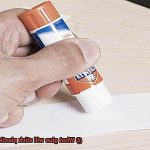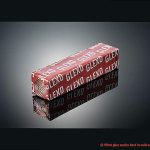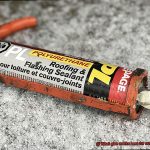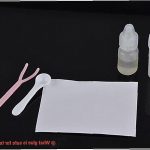Aluminium is a metal that’s as light as a feather but tough as nails. It’s used in various industries, from aerospace to construction, due to its versatility and durability. But what happens when you need to join aluminium pieces together? You’ll need the right glue for the job, or else your bond might be weak or non-existent.
So, what glue sticks to aluminium? There are multiple options available, each with its own set of strengths and weaknesses. From old-school epoxy to cutting-edge cyanoacrylate, the adhesive you choose will depend on your specific needs.
Two-part epoxy is one of the most popular choices, providing a robust and long-lasting bond. This type of glue is perfect for high-stress applications like car frames or machinery. However, it can be messy and isn’t ideal for delicate projects.
Cyanoacrylate, also known as super glue, is another option that dries quickly and works well with aluminium. It’s great for small projects where precision is crucial, such as electronics or jewellery. However, it may not withstand high-stress environments and can become brittle over time.
In this blog post, we’ll dive into the different types of glue that stick to aluminium and their pros and cons. We’ll also discuss what factors you should consider when selecting the right adhesive for your project. So whether you’re an expert mechanic or a DIY enthusiast looking to fix something around the house, keep reading to learn more about what glue sticks best to aluminium.
What is Aluminum?
Contents
- 1 What is Aluminum?
- 2 Why is Bonding Aluminum Challenging?
- 3 Types of Adhesives for Aluminum
- 4 Surface Preparation Before Applying Adhesive to Aluminum
- 5 Advantages and Disadvantages of Different Adhesives for Aluminum Bonding
- 6 How to Choose the Right Adhesive for Your Project
- 7 Tips for Successful Bonding of Aluminum Parts with Adhesive
- 8 Conclusion
Aluminum is a fascinating metal that has gained immense popularity across various industries due to its exceptional characteristics. This lightweight, silvery-white metal is the third most abundant element in the Earth’s crust, making up about 8% of its weight. Its high strength-to-weight ratio and resistance to corrosion make it a top choice for construction, transportation, packaging, and electrical applications.
The discovery of aluminum dates back to the early 19th century, but it wasn’t until the late 1800s that a practical method for producing aluminum was developed. Today, aluminum is produced through the electrolysis of aluminum oxide dissolved in molten cryolite, which has revolutionized numerous industries worldwide.
One of the unique properties of aluminum is its ability to form a thin layer of oxide on its surface when exposed to air. This layer acts as a barrier against corrosion and protects the underlying metal from further oxidation. However, this oxide layer can make it challenging for adhesives to bond to aluminum surfaces.
Fortunately, there are several types of adhesives available that can effectively bond to aluminum, including epoxy, cyanoacrylate (super glue), polyurethane, and silicone adhesives. Each adhesive has its specific properties and benefits that cater to different applications.
Epoxy adhesives are known for their strong bond and durability. They can bond well to various surfaces, including aluminum, but require proper surface preparation before application to ensure maximum adhesion.
Cyanoacrylate or super glue is a fast-drying adhesive that can provide a strong bond in a matter of seconds. It’s ideal for small-scale projects that require quick bonding.
Silicone adhesives are flexible and perfect for aluminum surfaces that demand flexibility. They’re commonly used in automotive and construction applications due to their resistance to high temperatures and weather conditions.
Polyurethane adhesives are versatile and can bond well to different surfaces, including aluminum. They provide a strong bond and can withstand harsh environments and temperature changes.
When selecting an adhesive for bonding aluminum, it’s crucial to consider several factors such as surface preparation, flexibility, and resistance to environmental conditions. Proper surface preparation involves cleaning the surface thoroughly and removing any contaminants that may affect the bonding process. Additionally, the type of aluminum being used should be considered as some alloys may require specific adhesives.
Why is Bonding Aluminum Challenging?
The first challenge is aluminum’s smooth surface, making it difficult for adhesives to adhere properly. In addition, aluminum’s natural oxide layer can prevent bonding. These factors mean that regular adhesives may not be strong enough to hold the aluminum together, especially in high-stress situations.
Another obstacle is aluminum’s high thermal conductivity. It heats up and cools down quickly, causing adhesives to break down or weaken over time. This means that even if you manage to get a bond initially, it may not last long, especially if exposed to high temperatures or extreme weather conditions.
Furthermore, during the manufacturing process, aluminum is often coated with oils, dirt, or other contaminants. These contaminants can interfere with the adhesive’s ability to create a strong bond. Therefore, proper surface preparation is essential before applying any adhesive to aluminum surfaces.
Finally, aluminum is often used in applications that require high strength and durability, such as aerospace and automotive industries. In such cases, the bond strength must withstand high loads and stresses without failing or breaking down over time.
To overcome these challenges, specialized adhesives designed for aluminum bonding can be used. For example, epoxy, cyanoacrylate, polyurethane, and silicone adhesives cater to different applications and environmental conditions.
Types of Adhesives for Aluminum
Aluminum is a versatile metal that is used in various industries. However, bonding aluminum can be challenging because of its nonporous surface. Therefore, it is essential to choose the right adhesive for the job.

There are several types of adhesives available in the market, but not all are suitable for aluminum bonding. Here are five types of adhesives that work well with aluminum:
Acrylic Adhesives
Acrylic adhesives offer high bonding strength and have good resistance to weathering, UV light, and chemicals.
They are ideal for bonding aluminum materials with glass or other plastics because of their versatility.
Structural Adhesives
Structural adhesives provide excellent bonding strength and durability for heavy-duty applications. They are ideal for bonding large aluminum parts together, such as aircraft structures or automotive frames.
Structural adhesives require specific surface preparation before application to achieve maximum results.
Epoxy

Known for its high strength and durability, epoxy is a top choice for industrial settings and DIY projects alike.
One of the key benefits of using epoxy on aluminum is its ability to withstand exposure to harsh weather conditions and extreme temperatures. This makes it a go-to adhesive for outdoor applications such as automotive repairs, boat repairs, and construction projects.
However, achieving a successful bond requires proper surface preparation. Before applying epoxy, it’s crucial to clean the aluminum surface thoroughly and create a rough texture for the adhesive to grip onto. Using a primer specifically designed for use with epoxy adhesives can also improve adhesion.
When selecting an epoxy for aluminum bonding, there are different types to choose from including two-part epoxies, one-part epoxies, and epoxy putties. Two-part epoxies are ideal for bonding aluminum due to their superior strength and durability. One-part epoxies are also effective but may not be as strong as their two-part counterparts.
It’s important to consider the specific properties required for your project when selecting an epoxy. Different types of epoxies have varying cure times, viscosity levels, and temperature resistance levels. Consulting with a professional or reading product specifications carefully can help ensure that you select the right epoxy for your needs.
Cyanoacrylate (Super Glue)

If you’re searching for a fast and efficient way to bond aluminum surfaces, look no further than cyanoacrylate, commonly known as super glue. This powerful adhesive boasts numerous benefits and considerations that you should keep in mind when using it on aluminum surfaces.
Firstly, let’s explore the benefits. One of the most significant advantages of using cyanoacrylate on aluminum is that it creates an almost invisible bond. This makes it perfect for applications where aesthetics are crucial. You won’t have to worry about unsightly glue marks detracting from the appearance of your project.
Another advantage is how quickly this glue bonds. The moment it comes into contact with moisture, it rapidly hardens and creates a robust bond. This means that you won’t have to wait long to finish your project. Moreover, it’s effortless to use – simply apply a small amount of glue to the surface and press the two pieces together firmly.
However, when using cyanoacrylate on aluminum surfaces, there are some essential considerations to keep in mind. Firstly, you must ensure that the surface is clean and free from any oil or debris that could interfere with the bonding process. Additionally, sanding the surface lightly creates a rough texture that helps the glue adhere better.
It’s also important to note that cyanoacrylate may not be suitable for applications where the bond will be exposed to high levels of stress or strain. If you require a more robust bond for heavy-duty applications, consider using epoxy instead.
Silicone
Silicone proves to be an exceptional adhesive that can bond a variety of materials, including aluminum. Its popularity stems from its ability to resist moisture and tolerate high temperatures, making it ideal for applications where exposure to extreme heat or humidity is likely.
There are two types of silicone adhesives available on the market: one-component and two-component adhesives. One-component silicone adhesives require no mixing and are ready to use. Meanwhile, two-component silicone adhesives require mixing before application.
When bonding aluminum with silicone adhesive, it’s paramount to ensure that the surfaces being bonded are clean and free from dirt, grease, or oil. Any contaminants on the surface can weaken the bond between the adhesive and aluminum. Thus, it’s essential to wipe the surfaces thoroughly with a clean cloth before applying the silicone adhesive.
To apply silicone adhesive to aluminum, squeeze it out of the tube onto a clean surface and spread it thinly over the surface of the aluminum using a spatula or brush. Make sure to apply enough adhesive so that it covers the entire surface area.
After this, press the two surfaces together firmly and hold them in place until the adhesive has cured. It’s vital to note that silicone adhesive takes longer to cure than other types of adhesives. Depending on the type of silicone adhesive used, it can take anywhere from a few hours to several days for the adhesive to fully cure and achieve its maximum strength. As such, carefully follow the manufacturer’s instructions and allow sufficient time for curing before using the bonded aluminum parts.
Polyurethane
Aluminum is a remarkable metal known for its strength and versatility in various industries such as construction and aerospace. However, bonding aluminum to other surfaces can be a challenge that requires a superhero adhesive like polyurethane.
Polyurethane adhesive is renowned for its exceptional bonding strength and the ability to fill gaps, making it ideal for uneven surfaces. Its reliability and durability make it a popular choice in the aerospace and automotive industries where strong bonding solutions are essential.
If you’re planning to use polyurethane adhesive to bond aluminum, ensure that the surfaces are clean and free from any grease or oil. This preparation allows the adhesive to bond effectively with the aluminum surface. After application, the adhesive should be given enough time to cure fully before applying any load or stress.
It’s worth noting that polyurethane adhesives require care during application since they can be challenging to remove. However, this also means once they bond, they offer a long-lasting and robust bond that can withstand harsh conditions like extreme temperatures, water, and chemicals.
Surface Preparation Before Applying Adhesive to Aluminum
Before applying any adhesive, it’s crucial to properly prepare the surface to ensure maximum adhesion and performance of the glue. Here are some essential steps to follow:
First, clean the surface thoroughly with a degreaser or rubbing alcohol to remove any dirt, oil, grease, or other contaminants that may hinder the adhesive’s ability to bond with the aluminum. Next, use a fine-grit sandpaper or steel wool to lightly scuff the surface. This creates a rough texture that allows the adhesive to grip better. Remember to wipe away any debris left behind from sanding.
Selecting the right adhesive is also essential for bonding aluminum surfaces together. Not all adhesives are suitable for use on this material, so choose one that is specifically designed for it. Epoxy and cyanoacrylate adhesives are both excellent options for bonding aluminum.
When applying the adhesive, it’s important to follow the manufacturer’s instructions carefully. Apply a thin layer of adhesive evenly onto the prepared surface using a brush or applicator. Avoid over-applying the adhesive, as this can cause it to ooze out and create a mess. Once applied, press the two surfaces together firmly and hold them in place until the adhesive sets.
Advantages and Disadvantages of Different Adhesives for Aluminum Bonding
If you’re in need of an adhesive for bonding aluminum, you’ll be pleased to know that there are several options available. However, each adhesive comes with its own set of advantages and disadvantages that must be taken into account before making a decision.
Let’s start with epoxy, which is arguably the most popular adhesive for aluminum bonding. Epoxy boasts a strong bonding ability and can be used on a variety of surfaces, including aluminum. It’s also water and heat-resistant, making it ideal for outdoor and high-temperature applications. However, it can be tricky to use and requires proper mixing and curing time. Additionally, epoxy may not be the best choice for extreme pressure situations as it can be brittle and prone to cracking.
Moving on to cyanoacrylate, also known as super glue – this adhesive is a favorite among many due to its quick drying time and ability to form a strong bond on metal surfaces, including aluminum. It’s also easy to use, as it requires no mixing or curing time. However, cyanoacrylate can be brittle and may not hold up well under extreme temperatures.
Acrylic adhesives are another widely used option for bonding aluminum. They form a strong bond quickly, even on dissimilar surfaces, and are resistant to water and chemicals – making them perfect for industrial applications. However, acrylic adhesives may require surface preparation before use and may not hold up well under extreme temperatures.
Lastly, we have polyurethane adhesives, which are known for their flexibility and ability to absorb shock and vibration. They form a strong bond on various surfaces, including aluminum. Unfortunately, polyurethane adhesives may not be as resistant to high temperatures as the other adhesives mentioned.
How to Choose the Right Adhesive for Your Project
Bonding aluminum can be a challenging task due to its smooth and non-porous surface. However, choosing the right adhesive for your project can make the process easier and more effective. Here are five sub-sections to help you choose the right adhesive for your project involving aluminum:
Determine the nature of your project and the type of aluminum you are working with.
Before selecting an adhesive, it’s crucial to determine the nature of your project and the type of aluminum you are working with. This will help you identify the right adhesive that will provide a strong and durable bond. For example, if you are bonding aluminum in a high-temperature environment, you will need an adhesive that can withstand extreme temperatures.
Consider epoxy for a strong and versatile bond.
Epoxy is one of the most commonly used adhesives for aluminum because of its strength and versatility. Epoxy adhesives consist of two parts: resin and hardener
Try cyanoacrylate glue for fast and strong bonding.
Cyanoacrylate glue, commonly known as superglue, is another option for bonding aluminum surfaces. This type of adhesive works well with aluminum surfaces and provides a fast and strong bond. However, it may not be ideal for projects that require flexibility or exposure to high temperatures.
Use silicone adhesive for flexibility and extreme temperatures.
Silicone adhesive is an excellent option if you need an adhesive that is flexible and can withstand extreme temperatures. Silicone adhesives are ideal for bonding aluminum surfaces that require flexibility or are exposed to high temperatures. They are also resistant to water and chemicals, making them suitable for use in harsh environments.
Follow the manufacturer’s instructions carefully.
Regardless of the type of adhesive you choose, it’s essential to follow the manufacturer’s instructions carefully. This will help you use the adhesive correctly and achieve the best possible results. Additionally, make sure to consider factors such as curing time, strength requirements, temperature resistance, and flexibility when selecting your adhesive.
Tips for Successful Bonding of Aluminum Parts with Adhesive
Bonding aluminum parts with adhesive can be a challenging task, but following these essential tips will help ensure a successful bond:
Choose the right adhesive
Selecting an adhesive that is specifically designed for bonding aluminum is crucial. Epoxy adhesive is one of the most commonly used adhesives for bonding aluminum due to its excellent bonding strength and durability.
Clean and prepare the surfaces
Properly cleaning and preparing the surfaces before applying the adhesive is essential. Any dirt, grease, or oil on the surface can prevent the adhesive from properly bonding to the aluminum. Roughening up the surface of the aluminum slightly can also improve adhesion.
Apply the adhesive evenly
The amount of adhesive applied is important as too much or too little adhesive can result in a weak bond. Following the manufacturer’s instructions carefully will ensure optimal application of the adhesive.
Properly clamp the parts
Clamping the parts together while the adhesive sets is another important factor in achieving a successful bond. This helps ensure that the adhesive fully bonds with the aluminum surfaces, providing maximum strength and durability.
Allow plenty of time for curing
Rushing this step can result in a weak bond, so it’s important to follow the manufacturer’s instructions for curing time. Epoxy adhesives typically require 24 hours to cure fully.
XQ6THQM0Qg0″ >
Conclusion
In conclusion, finding the right adhesive for aluminum can be a tricky task.
But with the proper research and knowledge, you can select the perfect glue that will bond your aluminum surfaces effectively. Remember to consider factors such as strength, drying time, and temperature resistance when selecting an adhesive.
Whether you’re repairing a broken aluminum object or creating something new entirely, there is an adhesive out there that will get the job done.






